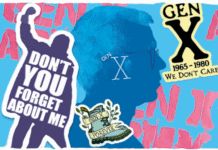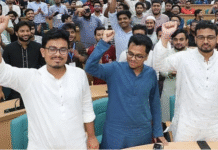Bangladesh: The Price of Freedom at Bengal Gallery
“The trickling stream of refugees coming from East Pakistan was swelling. By the end of the day, it took the shape of an exodus. I arrived in Kolkata by the morning flight and drove straight to Khulna via Jessore Road…It was August and monsoon was at its peak, the sky was a deep grey and it rained all the way…The refugees with their meagre belongings were pouring in…Most were drenched soaked in rain, and overwhelmed with suffering and fatigue. There was a kind of silence — no one
talked…”
— Raghu Rai
In 1971, Rai, then working for The Statesman, took photographs of the refugees from East Pakistan (now Bangladesh) and young freedom fighters. These images were published in newspapers, but they didn’t just meet the needs of the media, they became much more. These images documented a nation persecuted and dehumanised, a nation fighting tooth and nail against Pakistan army to stay alive and be free. Rai’s conscience essentially put a human face on conflict coverage.
Of these photos, 51 are now on display at Bengal Gallery of Fine Arts in Dhaka. The exhibition — jointly organised by Bengal Gallery and Indira Gandhi Cultural Centre (IGCC), High Commission of India in Dhaka — opened on December 7.
The exhibition was formally inaugurated by chief guest, Speaker of Bangladesh Parliament, Md. Abdul Hamid Advocate. Special guests were: Indian High Commissioner to Bangladesh, Pankaj Saran, and trustee of Liberation War Museum, Mofidul Hoque.
Welcoming all and thanking IGCC, High Commission of India, director of Bengal Gallery, Subir Chowdhury, said that this exhibition is an invaluable documentation of the Liberation War and should be taken to all parts of Bangladesh.
Mofidul Hoque urged Raghu Rai — who was present at the opening — to undertake another photographic journey through Bangladesh which can provide a contrast between the country in 1971 and now. This could evaluate our progress as a nation, he added.
Speaker of the Parliament, Md. Abdul Hamid Advocate, recalled India’s sincere cooperation during the 9-month long war, particularly providing shelter to 10 million Bangladeshis, with gratitude.
The Indian High Commissioner Pankaj Saran wished all the best and said that IGCC was fortunate to bring these photos to Bangladesh in December, when the nation celebrates its victory.
The collection of images can be divided in two segments: ‘Refugees’ and ‘After the Victory’.
Black and white images of refugees, the exodus across the border to escape genocide, are stark. There’s no digital manipulation at work. Emaciated people in rags, carrying their belongings in sacks, marching ahead. The journey was best described by American poet Allen Ginsberg:
Wet processions families walk
Stunted boys big heads don’t talk
Look bony skulls & silent round eyes
Starving black angels in human disguise…
(September on Jessore Road; November 14-16, 1971)
Rai’s photos show elderly people, who cannot walk any more and have to be carried by family members during the journey across border; refugees living in concrete pipes; desolate faces who have nothing to say but just looking straight at the camera, looking into the soul behind the lens; and the then Prime Minister of India, Indira Gandhi, folding hands to gesture ‘namaskar’, amongst refugees.
Images also show a jubilant nation after victory, against a backdrop of ruins; valiant freedom fighters waving the ‘red and green’; refugees returning home; and the triumphant return of Bangabandhu to Bangladesh on January 10, 1972.
It takes tremendous courage to be a refugee — leaving everything behind, becoming stateless and dehumanised. That was the price of freedom Bangladeshis paid. Raghu Rai’s photographs narrate that journey with deep empathy.
The exhibition will continue till Victory Day (December 16).
Source: The Daily Star










